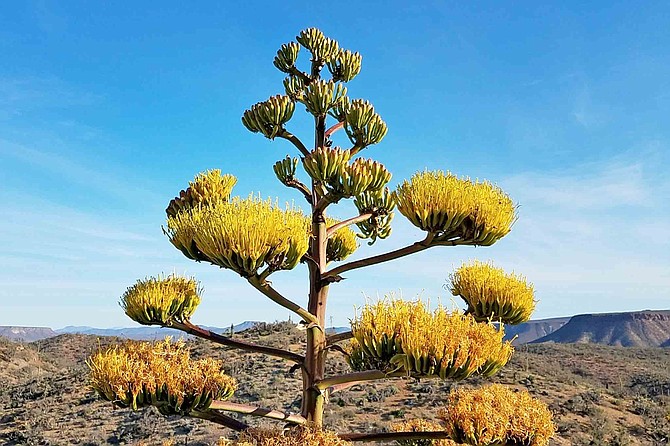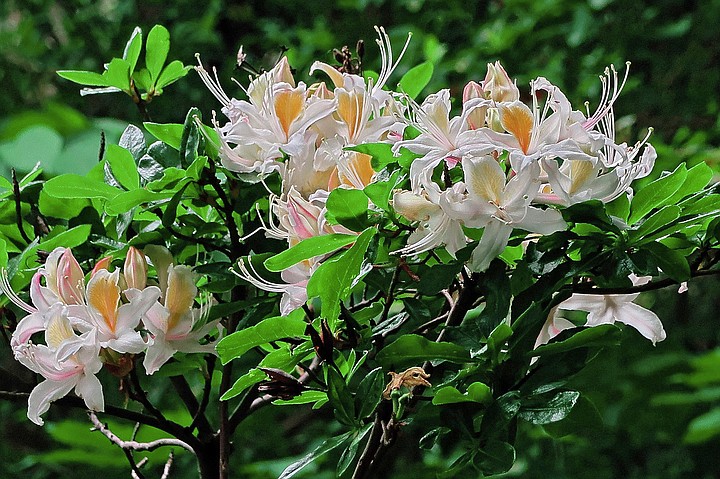 Facebook
Facebook
 X
X
 Instagram
Instagram
 TikTok
TikTok
 Youtube
Youtube

Agaves (a.k.a. century plants) are coming into bloom in many summer gardens this month. After a decade or more (not a century) of growth, the larger kinds of agave send up a tall, yellow-blossomed flower stalk from a base of fleshy, succulent, thorn-tipped leaves. The stalk and basal leaves die, but suckers make new plants and begin the cycle anew.

Western Azalea, a native rhododendron, is blooming this month in scattered locations throughout the county’s higher mountains. Fond of semi-shade, it’s often found growing along creeks and canyon bottoms. Like its ornamental cousins, western azaleas’ fragrant white (sometimes pink or yellow tinted) flowers are borne in ornate clusters. Palomar Mountain State Park harbors a colony of them alongside a trail linking Doane Valley and Chimney Flats.

This month Venus is the brightest it has been since 2015. Because Venus revolves more quickly than the Earth — 224.8 days vs. 365.25 days — it takes 13 Venus years to match 8 Earth years and return to the nearest point in the orbit. The planet will appear in the WNW sky at 100 times brighter than any other star in the heavens. Venus is also one of only three celestial bodies that can cast a shadow. If you are in a rural location free of artificial lights, you’ll be able to see your shadow cast by Venus light. This Venus shadow will have very sharp edges due to the lack of light spillover, because Venus is a smaller point in the sky than the sun or moon.


Agaves (a.k.a. century plants) are coming into bloom in many summer gardens this month. After a decade or more (not a century) of growth, the larger kinds of agave send up a tall, yellow-blossomed flower stalk from a base of fleshy, succulent, thorn-tipped leaves. The stalk and basal leaves die, but suckers make new plants and begin the cycle anew.

Western Azalea, a native rhododendron, is blooming this month in scattered locations throughout the county’s higher mountains. Fond of semi-shade, it’s often found growing along creeks and canyon bottoms. Like its ornamental cousins, western azaleas’ fragrant white (sometimes pink or yellow tinted) flowers are borne in ornate clusters. Palomar Mountain State Park harbors a colony of them alongside a trail linking Doane Valley and Chimney Flats.

This month Venus is the brightest it has been since 2015. Because Venus revolves more quickly than the Earth — 224.8 days vs. 365.25 days — it takes 13 Venus years to match 8 Earth years and return to the nearest point in the orbit. The planet will appear in the WNW sky at 100 times brighter than any other star in the heavens. Venus is also one of only three celestial bodies that can cast a shadow. If you are in a rural location free of artificial lights, you’ll be able to see your shadow cast by Venus light. This Venus shadow will have very sharp edges due to the lack of light spillover, because Venus is a smaller point in the sky than the sun or moon.
Comments